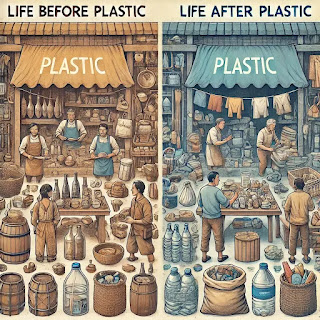The Hidden Threat: Microplastics Found in Everyday Food
Microplastics are tiny plastic particles, usually less than 5 millimeters in size. Initially, microplastics were known as an environmental issue in oceans, but now, the discovery of microplastics in food has raised growing concerns. These small particles have been detected in various types of food, from seafood, salt, and drinking water to vegetables and fruits.
How Do Microplastics Enter the Food Chain?
Microplastics mostly come from degraded plastic products such as plastic bottles, plastic bags, and other plastic materials. These small particles are carried by water streams and dispersed into various environments, including oceans, rivers, and soil.
A study published in Environmental Science & Technology found that microplastics are present in over 90% of drinking water samples worldwide. Additionally, research published in Nature Communications shows that microplastics have also been found in seafood like fish and shellfish, which are directly exposed to plastic-polluted marine habitats.
Moreover, microplastic particles have been discovered in agricultural soil contaminated by plastic waste. A journal from Science Advances reported that the use of plastic waste as organic fertilizer could be a significant source of soil contamination, allowing microplastics to be absorbed by plants through their roots.
What Are the Health Impacts?
The discovery of microplastics in food raises serious questions about its potential health impacts on humans. Although research on the direct effects of microplastics in the human body is still ongoing, some early studies suggest that these particles can enter the digestive system and may cause inflammation or tissue damage.
Research from Frontiers in Chemistry states that microplastics not only pose physical health risks but can also act as carriers for harmful chemicals like heavy metals and pesticides, which have toxic effects on the body.
What Can Be Done?
To reduce exposure to microplastics, several steps can be taken:
Reduce Plastic Usage: Cutting down on single-use plastic products like water bottles and plastic bags can help reduce the amount of microplastics circulating in the environment.
Choose Eco-Friendly Products: Opt for products with environmentally friendly or biodegradable packaging.
Support Waste Management Policies: Policies that encourage plastic recycling and limit new plastic production can significantly reduce microplastic pollution.
Conclusion
The discovery of microplastics in food is an increasingly urgent issue that requires serious attention. Although further research is needed to fully understand its impacts, preventive measures can be taken to reduce exposure and protect our health. Reducing plastic use and supporting eco-friendly initiatives are key to shielding ourselves and the environment from the threat of microplastics.






